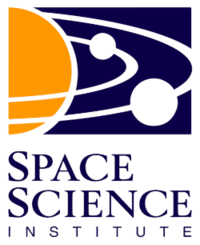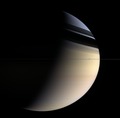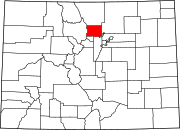 Logo of the Space Science Institute | |
| Abbreviation | SSI |
|---|---|
| Formation | 1992 |
| Type | Research, 501(c)3 Education |
| 84-1215290[1] | |
| Focus | "Discover, Educate, Inspire" |
| Headquarters | Boulder, Colorado, United States |
Members | 50+ |
Official language | English |
President | Bill Purcell[2][3] |
| Website | www |
The Space Science Institute (SSI) in Boulder, Colorado, is a nonprofit, public-benefit corporation formed in 1992. Its purpose is to create and maintain an environment where scientific research and education programs can flourish in an integrated fashion. SSI is among the four non-profit institutes in the US cited in a 2007 report by Nature, including Southwest Research Institute, Planetary Science Institute, and Eureka Scientific, which manage federal grants for non-tenure-track astronomers.[4]
YouTube Encyclopedic
-
1/5Views:207 24912 1696 3943 538449
-
IIST Admission | Indian Institute of Space Science Technology | IIST Courses
-
Institute of Space Technology
-
JWST Mission Operations Center at STScI
-
How does Hubble make colorful space pictures?
-
The video of the Korea Astronomy and Space Science Institute(KASI) in 5 minutes
Transcription
Description
SSI's research program encompasses the following areas: space physics, earth science, planetary science, and astrophysics. The flight operations branch manages the Cassini-Huygens spacecraft's visible camera instrument and provides spectacular images of Saturn and its moons and rings to the public. SSI participates in mission operations and is home to the Cassini Imaging Central Laboratory for OPerations (CICLOPS).[5]
The primary goal of SSI is to bring together researchers and educators to improve science education. Toward this end, the institute acts as an umbrella for researchers who wish to be independent of universities. In addition, it works with educators directly to improve teaching methods for astronomy. SSI has also produced several traveling exhibits for science museums, including Electric Space, Mars Quest, and Alien Earths. It is currently producing Giant Worlds.
SSI provides management support for research scientists and principal investigators, which help them to submit proposals to major public funding agencies such as National Aeronautics and Space Administration (NASA), National Science Foundation (NSF), Space Telescope Science Institute (STSci), Department of Energy (DOE), and Jet Propulsion Laboratory (JPL) Principal investigators are supported by SSI though proposal budget preparation, proposal submission, and project reporting tools, and have competitive negotiated overhead rates.[6]
The institute is loosely affiliated with the University of Colorado Boulder. SSI has obtained several grants in astrophysical sciences since 1992 from NSF and NASA funding agencies.[7][8][9][10][11][12][13][14] [15][16][17][18]
Divisions
SSI has five research centers:[19]
- Center for Space Plasma Physics (CSPP),
- Center for Extrasolar Planetary Systems (CEPS),
- Center for Mars Science (CMS),
- Center for Polarimetric Remote Sensing (CPRS),
- Center for Data Science (CDS).
SSI's National Center for Interactive Learning (NCIL)[20] is dedicated to expanding the understanding of educators, and citizens in science through educational and outreach programs by SSI researchers in four interconnected groups: Exhibition Development, Digital Learning, rofessional Development, and Public Engagement.[21]
SSI is managed by a board of 12 directors for Aerospace, Academic Research, Small Business Consultant, Astronomy, Science and Technology, Engineering, Civil Space, Martin, Planetarium, Innovation, Legal and Policy,[3] and 4 acting directors for Research, National Center for Interactive Learning (NCIL), Information Systems and Technology (IST), and Business Operations.[22]
Gallery
SSI has participated in NASA's Cassini mission and hosted the Cassini Imaging Central Laboratory for OPerations (CICLOPS).[5]
-
NASA's Cassini color view of the planet Saturn.
-
NASA's Cassini image of the planet Saturn.
-
Cassini-Huygens Image of Saturn's Subtle Spectrum.
-
NASA's Cassini image of Saturn's moon Mimas.
-
NASA's Cassini image ofSaturn's moon Iapetus.
See also
- Heidi Hammel
- Carolyn Porco
- Associated Universities, Inc.
- Planetary Science Institute
- Space Studies Institute
- Southwest Research Institute
References
- ^ "Space Science Institute, HIPAA Space". hipaaspace.com.
- ^ "Bill Purcell, Space Science Institute". spacescience.org.
- ^ a b "Board of Directors, Space Science Institute". spacescience.org.
- ^ Bjorn, Genevive (2007). "Freedom of the skies". Nature. 449 (7163): 750–751. doi:10.1038/nj7163-750a.
- ^ a b CICLOPS
- ^ "The Benefits of SSI Affiliation". spacescience.org.
- ^ "Electric Space: Exploring our Plasma Universe, NSF DRL Division Of Research On Learning". nsf.gov.
- ^ "Elementary, Secondary, and Informal Education -- Stardust: Our Search for Origins (A Travelling Exhibition), NSF DRL Division Of Research On Learning". nsf.gov.
- ^ "Making Space Social: Exploring the Educational Potential of the Facebook Social Network, NSF DRL Division Of Research On Learning". nsf.gov.
- ^ "Space Weather Outreach, NSF DRL Division Of Research On Learning". nsf.gov.
- ^ "Collaborative Research: NSFGEO-NERC:Conjugate Experiment to Investigate Sources of High-Latitude Magnetic Perturbations in Coupled Solar Wind-Magnetosphere-Ionosphere-Ground System, NSF AGS Div Atmospheric & Geospace Sciences". nsf.gov.
- ^ "Collaborative Research: Water in the Four Corners Region: Libraries and Exhibits Connecting and Engaging Communities with Their Water Systems, NSF DRL Division Of Research On Learning". nsf.gov.
- ^ "Asteroids! An integrated astronomy education program for small science centers and libraries, NSF DRL Division Of Research On Learning". nsf.gov.
- ^ "Finding NEO: asteroids, lightcurves, and amateur astronomers, NSF DRL Division Of Research On Learning". nsf.gov.
- ^ "Radiation Transfer in Aligned Grains: Probing Magnetic Fields in Molecular Clouds, Protostars, and Disks, NSF AST Division Of Astronomical Sciences". nsf.gov.
- ^ "Asteroid Satellites and Spins, NSF AST Division Of Astronomical Sciences". nsf.gov.
- ^ "GEM: Developing a Highly Predictable Canonical Geomagnetic Index to Gauge Space Weather, NSF AGS Div Atmospheric & Geospace Sciences". nsf.gov.
- ^ "SHINE: Physics of the Interplanetary Electric Potential and Modifications to Exosphere Models of the Solar Wind, NSF AGS Div Atmospheric & Geospace Sciences". nsf.gov.
- ^ "Research Centers, Space Science Institute". spacescience.org.
- ^ "National Center for Interactive Learning, Space Science Institute". spacescience.org.
- ^ "Education, Space Science Institute". spacescience.org.
- ^ "Leadership, Space Science Institute". spacescience.org.
External links
- Official website
- National Center for Interactive Learning
- Scientific Publications (INSPIRE-HEP)
- Scientific Publications (ResearchGate)
40°01′10″N 105°14′24″W / 40.01951117506793°N 105.24001395580994°W






